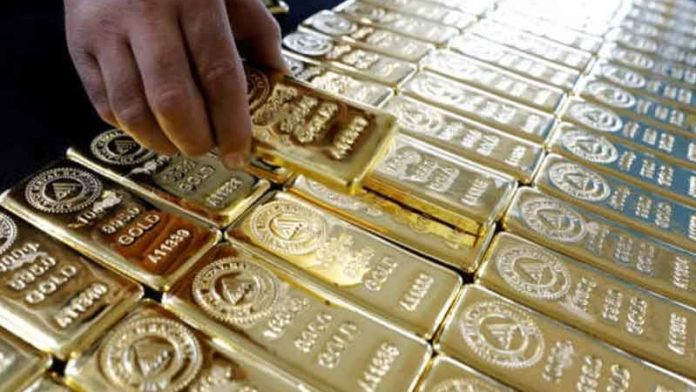
Graham Birch, a livestock farmer for the past decade, but previously MD of UK investment firm Blackrock’s natural resources fund, once brought a minted bar of gold into a conference presentation he was giving.
He placed it carefully on a table and said: “The whole time I give this presentation that metal will do absolutely nothing; it will remain completely unchanged”.
That, in a nutshell, is what gold does. It hangs around; the Bank of England alone has an estimated $100bn of it sitting in its vault. The aim of its preservation is preservation itself; to one day – usually a rainy one, economically speaking – provide monetary succour. This is what it’s doing now.
Analysts are trying to get their heads around just how far gold can go amid the current economic fallout brought on by the COVID-19 pandemic. “Gold prices could very reasonably be expected to rise to $1,892/oz and potentially as high as $3,000/oz,” said Charles Gibson, an analyst for Edison Research in a note during June.
The view is fuelled by the activities of the US Federal Reserve, which, in an effort to keep confidence flowing, has injected 58% of its monetary base in stimulus efforts, taking total monetary distribution to about $5.1tr since April.
According to Peter Mallin Jones and Tim Huff, analysts at Peel Hunt, a UK stockbroker, the gold price run has massively lifted cash flow for mining firms. Of the six companies in its coverage, they will generate 60% of their current market capitalisations through cash flows after capital expenditure.
Obviously, investors have long cottoned-on to this potential, but perhaps valuations of smaller companies – the exploration and small-cap firms – have yet to catch up. That’s the view of Michael Siperco, an analyst for Velocity Trade Capital in Toronto. He sees no immediate end to gold’s run.
A version of this article was first published in the Mining Yearbook 2020 which is available here: https://www.miningmx.com/the-mining-yearbook-2020/
“Volatility could continue in the near term, given the still unknown course of the pandemic, the impact of mining operations and, more importantly, the global economy,” he said in a note in May.
“Nonetheless, we largely look past the potential for near-term disruption with strong conviction in long-term rising gold prices, and the renewed ability for producers to benefit and sustainably grow production and capital returns.”
What, though, can investors ultimately expect of gold?
According to Renaissance Capital analysts, gold is – of itself – not a growth sector. Gold mining assets have limited lives and investment renewing reserves or growing production is frequently value destructive, the authors argue. But whilst the gold price is heading north, margin expansion is the name of the game.
“Based on the 2019 disclosed all-in sustaining costs, we calculate … the implied free cash flow margins for the sector could double on average assuming a $400/oz increase in the gold price from 2019 to current spot levels around $1,800/oz.
That was Renaissance Capital’s view three weeks ago when the report was published (on July 8). Since then, the gold price has scaled those levels and South African gold equities, in particular, have responded accordingly.
Joni Teves, a precious metals strategist for UBS Investment Bank, told Bloomberg News on Monday that consolidation of positions would be on investors’ minds in the coming weeks. She didn’t think the gold price had much upward umpf in its locker. That raises the question as to whether the market has already seen the best the gold price can offer.
Macquarie, an Australian bank, think much depends on the global economy. Provided stimulus efforts continue and suppress rates, gold will continue to blossom even if there is subsequent growth.
It said as far back as June that average spot forecasts would range between $1,713 and $1,725/oz with a quarterly average peak of $1,825 in the first quarter of next year. It also thinks an overshoot is possible as occurred in 2011/12. But it remains bullish.
“On a long-term basis, however, this outperformance does not look excessive,” it said of gold’s continued rally this year. “In 2011/12 prices peaked >$300/oz above our cross-asset ‘fair value’ estimate. Our point being that, in a bull market, we would expect gold to rally beyond fair value, as investors increase their exposure.”











